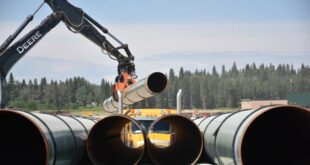TOKYO — The transition to new technologies in power generation, such as the use of LNG, ammonia and hydrogen, would require some government subsidy to ensure achievement of goals on decarbonization and, at the same time, ensuring stable and affordable energy cost, according to JERA Co. Inc., Japan’s largest power generation company.

JERA PIONEERS IN LNG-FIRED POWER PLANT — JERA CO. INC. introduced the LNG technology to the world as a new source of power. Photo shows JERA’s largest LNG and power plant facility, located in a 136-hectare complex in Futtsu, Japan.
Satoshi Yajima, JERA senior managing executive officer and director of Aboitiz Power, told Filipino journalists attending the JERA briefing that the most challenging part of these decarbonization efforts is price.
“Price is very very important,” he pointed out adding that, “even if you introduce new technology but if the price is high people cannot accept that so we need to introduce a new technology that people can accept. Price is a key.” This means government subsidy would be important.
On ammonia, the cost is $200 to $400 per ton or double the price of coal, which is $100 per ton. This price is only for blue ammonia which is not yet decarbonized and is being used as fertilizer for agriculture.
To bridge the cost, Yajima said that the best transition fuel source for the Philippines is LNG (liquified natural gas). This way, existing coal plants can still be modified and utilized.
JERA, which operates the largest LNG power plant in the world, said that LNG is the cheapest technology solution for Philippines in the short term to transition from coal power, but the long term solution will be ammonia and hydrogen.
Yajima further noted that, while coal is not the best solution, these are the best facilities in southeast Asia that can be converted for use for other solutions such as LNG, ammonia and hydrogen.
While shutting down a coal plant could be the simple solution, Yajima stressed these existing plants cannot operate forever but could be converted for new technologies.
“But this (ammonia and hydrogen) kind of combination must be planned by each country,” he said adding that huge investments are required for each solution and each government must have its own solution.
He said that JERA is willing to share the ammonia-hydrogen technology with colleagues or through an alliance in southeast Asia and for governments to think what is the best way.
This is what JERA has been doing with the Aboitiz Power, its partner in the Philippines, he said. “We need to develop together to find new technologies,” he said adding that the intention is to bring new technologies such as transitioning to LNG from thermal for the short term and to ammonia and hydrogen as a long term solution.
Yajima, who started his career in the energy sector in Manila working with Sucat Power plant and Calaca Batangs in 1990, said that, since they are one of the biggest buyers of LNG in the world, they can compete globally in terms of pricing.
JERA owns the world’s largest LNG facility in Futtsu that distributes power to different plants in Tokyo. JERA, a joint venture between Tokyo Electric Power and Chubu Electric Power, generates around 30 percent of domestic electricity with 28.6 percent of its energy portfolio is LNG and 10 percent oil.
By mixing LNG in energy portfolio, JERA said the Philippines can offer the cheapest form of clean energy and would be in time while waiting for prices of ammonia and hydrogen as demand goes up.
In addition, JERA is also not pushing strongly for ammonia so as not to disturb the use of ammonia for the agriculture sector, which is a very important function.
For now, JERA would like to start building a new supply chain for ammonia and hydrogen before finally plunging into it. — Bernie Cahiles-Magkilat
 Atin Ito First Filipino Community Newspaper in Ontario
Atin Ito First Filipino Community Newspaper in Ontario






